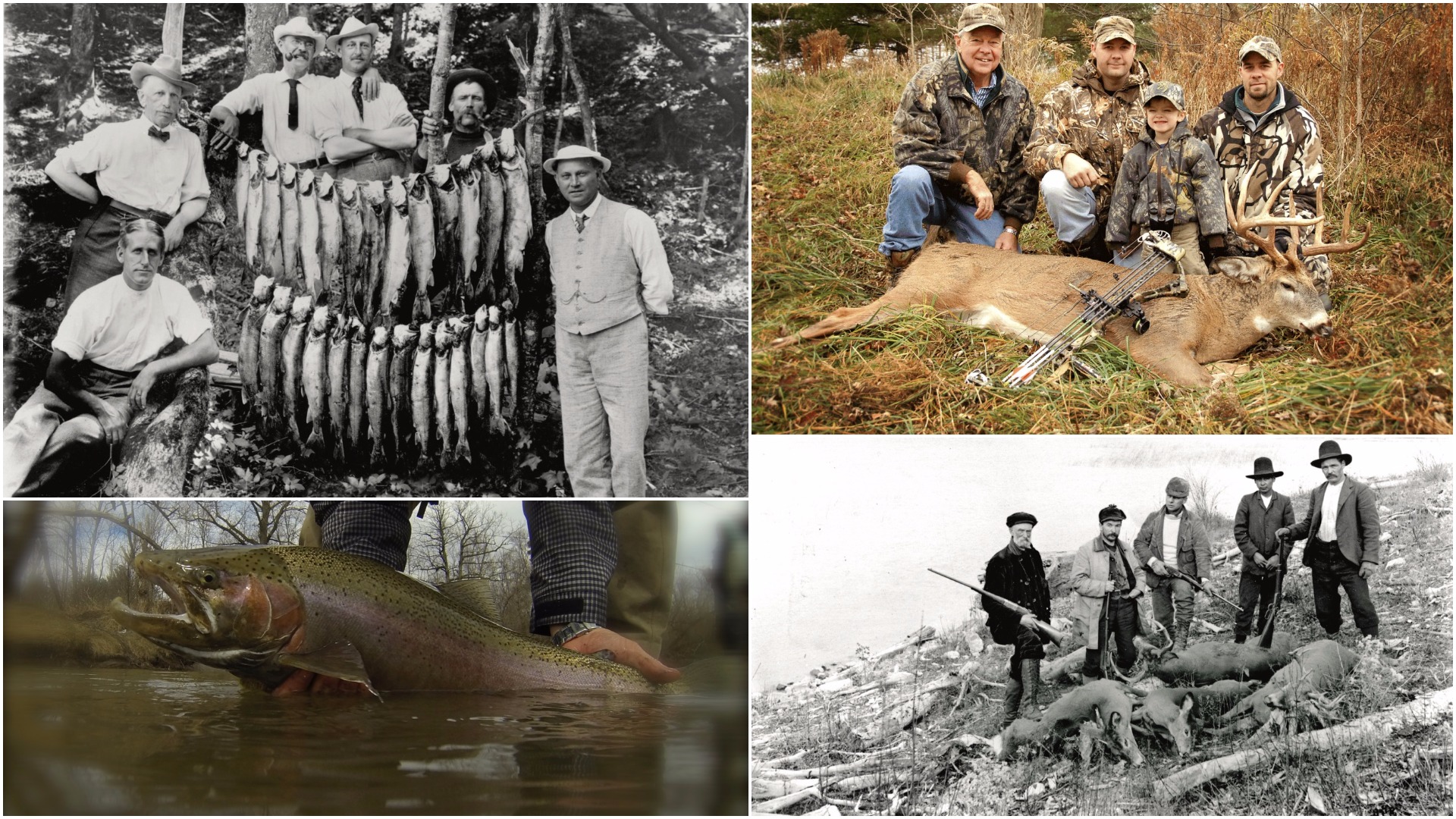Canada at 150
Our country has seen a lot of change since Confederation, including the way we view fishing and hunting. Thankfully for that, the outdoor adventure continues
Advertisement
In March 1882, a 22-year-old artist and writer named Ernest Thompson Seton boarded a train in Saint Paul, Minnesota, and headed for Winnipeg. Halfway through the journey, a blizzard whirled in and blanketed the tracks. Repeatedly, the crew and passengers got out to shovel a path for the steam locomotive. It seemed to take forever to get to Winnipeg, and with typical pluck, Seton remembered the trip as a great adventure. But something even more memorable occurred as the train finally chugged into the wooded outskirts of Winnipeg. Glancing out the window, he saw a dramatic scene that stirred him to the soul—a giant wolf, fending off a pack of marauding dogs.
“He looked like a lion,” Seton later wrote in The Winnipeg Wolf, one of the first of his many stories about wild animals. “There he stood, all alone—resolute-calm—with bristling mane, and legs braced firmly, glancing this way and that, to be ready for an attack in any direction…. I had been favoured with a view, in broad daylight, of a rare and wonderful creature.”
Advertisement
The Canadian Confederation was just 15 years old when Seton arrived, fleeing a stuffy English upbringing and punitive father. He planned to become a naturalist, outdoorsman and hunter, and he found it all in the rolling hills of western Manitoba, where he studied wild animals, hunted, sketched and wrote stories. He was a prolific and natural storyteller, and became one of the Victorian era’s most famous authors, with works such as The Trail of the Sandhill Stag. For more than a century, his books encouraged countless kids in their dreams of adventure in the outdoors.
By the time I discovered Seton’s books (my father had given me a copy of Two Little Savages when I was 10), the wooded fringes of Winnipeg had been shingled over with shopping malls and ticky-tacky suburbs. But I too longed to be a woodsman, and hunted with my BB gun through the willow scrub along the nearby railway track, not far from where Seton had spotted the great wolf 80 years before.
My desire to hunt wasn’t complicated with sympathy for the little birds and animals I devoutly wanted to kill. Hunting was a game, and one of the rules was, the loser has to die. But after racking up enough kills to cover the walls of any boyhood tree fort—wily chipmunks, sharp-eyed grackles, a beautiful yellow warbler and a fat woodchuck that my buddies and I dazed with a fusillade of BBs then beat to death with gun butts—I began to notice that hunting was more fun for us than our opponents.
Advertisement
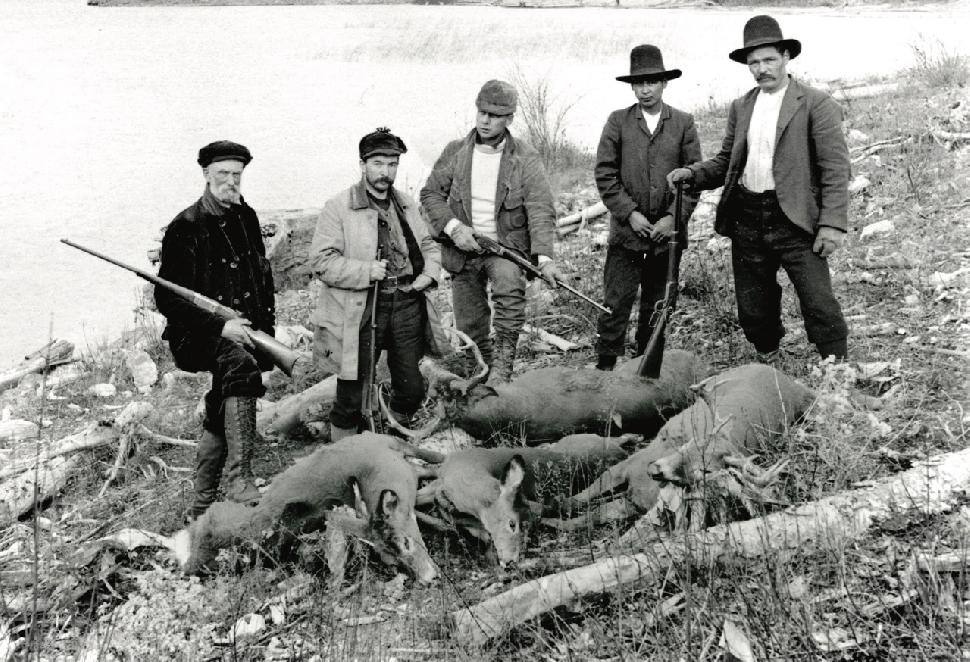
Seton would eventually experience the same misgivings. But he didn’t hunt frogs. He hunted wolves. They were smart, elusive, and widely loathed, and his 1894 book How to Catch Wolves became an authoritative text on predator control. His prowess as a hunter became so well known that American ranchers asked him to come to New Mexico, where the extinction of the bison herds had left a large population of massive wolves with nothing to eat except cattle. The ranchers particularly wanted Seton to terminate “Lobo,” a huge wolf that had killed hundreds of cattle and had a $1,000-bounty on its head. Seton wanted that wolf, but every time he rode out to check his trapline, a clear message was printed in the dirt—the wolf would review his best-laid traps and urinate on them.
Seton came to believe the wolf was taunting him, and a hunt that was supposed to take two weeks stretched out for more than four months. He felt humiliated, and finally hatched a sinister plan. The outlaw wolf had mated with a young white female the locals had named “Blanca,” and Seton decided he would go after her instead. He succeeded in trapping Blanca and shot her. The next day, he heard Lobo howling from the nearby hills. It was a mournful cry, he wrote, “with an unmistakable note of sorrow in it…no longer the loud, defiant howl, but a long, plaintive wail.”
Using the female’s pelt as a lure, Seton constructed a dead-end maze of heavy leg-hold traps, and the next morning, he found the outlaw stretched on the ground, trapped by all four legs. As Seton raised his Winchester to finish the task, the wolf gazed at him calmly. Something in the animal’s dignified acceptance of defeat touched Seton’s heart, and he found himself unable to shoot. He took the big wolf prisoner instead, and although the wolf died soon after, having refused to drink, Seton’s change of heart was a pivotal moment in wildlife conservation.
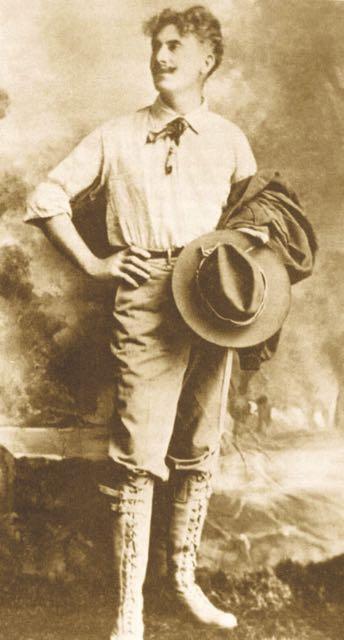
Wolves hadn’t created the problem. People had. And Seton’s 1898 account of his long wolf hunt, “Lobo the King of Currumpaw,” challenged the common image of predators as vermin. It was the first story in his book Wild Animals I Have Known, which became a massive bestseller, and helped launch the North American conservation movement. No one summarized the message of conservation better than Seton himself: “Ever since Lobo,” he wrote, “my sincerest wish has been to impress upon people that each of our native wild creatures is in itself a precious heritage.”
Seton’s message wasn’t an attack on hunting. He continued to hunt, as did his personal friend and admirer Teddy Roosevelt, who himself went on to become the most fervent conservationist to ever occupy the White House. But Seton, Roosevelt and other pioneers of the conservation movement, such as John Muir, did introduce the notion that hunters and anglers have both a managerial and moral duty to wildlife—that they must govern and regulate consumptive activities to prevent overharvesting, all the while conducting their activities ethically, remembering that animals are capable of fear, pain, sorrow and loyalty. We must never forget, they told us, that for game animals, hunting is more than a game.
This conservation ethic radically changed the way North Americans pursue wildlife. Until then, it was considered good clean fun to harvest fish with explosives, blast flocks of roosting ducks with 100-pound punt guns and shoot at herds of running buffalo from the windows of rolling passenger trains. Hunters of the 1800s brought about the extinction of the Labrador duck, the passenger pigeon, the heath hen, North America’s only native parrot—the resplendent Carolina parakeet—and many other species. The war against wildlife would no doubt have continued if hunters hadn’t experienced a bout of conscience, akin to what Seton felt when he looked down his rifle barrel into the eyes of Lobo.
The carnage had to stop, and lawmakers got involved. Unregulated, year-round commercial hunting of waterfowl was halted when the Canadian and U.S. governments signed the Migratory Bird Treaty Act of 1918, which required hunters to purchase a licence and observe strict limits. In 1938, a Minnesota duck hunter and philanthropist named James Ford Bell teamed up with legendary naturalist Aldo Leopold—himself considered “the father of modern ecology”—opened a waterfowl research station at Manitoba’s Delta Marsh, furthering the work of Delta Waterfowl, an international conservation group that now boasts more than 46,000 members. That same year, an organization called Ducks Unlimited Canada opened a tiny office in downtown Winnipeg and its handful of employees—duck hunters all—joined their American counterparts to set about halting the catastrophic destruction of waterfowl wetlands across North America.
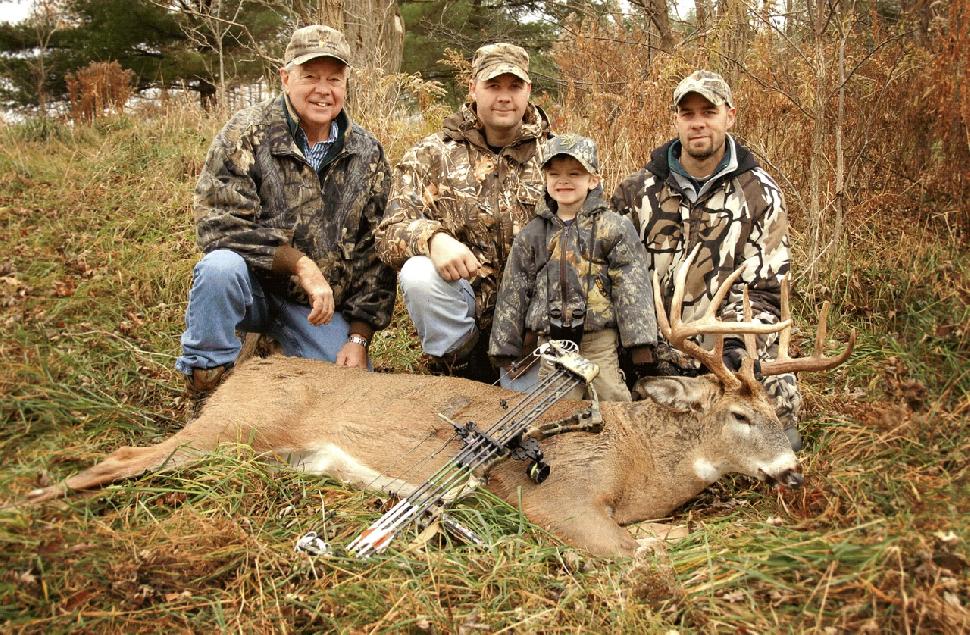
Scientists of the 1930s knew very little about the relationship between waterfowl and habitat, and the first DU projects were diked, engineered wetlands that actually did little to help ducks. But with time, conservationists learned that Aldo Leopold was right—all wild creatures are elements of a vast, interrelated web—and DU eventually concentrated its efforts on protecting entire habitats, with the understanding that nature would do the rest. DU habitat restoration projects began including nesting cover, brushy uplands and adjacent woodlots, and those projects not only benefitted ducks, but also myriad other creatures.
Habitat protection also benefitted people—farmers, hikers, schoolkids on field trips, bird watchers and naturalists of all kinds. It allowed urban youngsters to pursue their dreams of a life in the outdoors. Like many city kids, I was enthused by adventures I could only experience vicariously through the works of authors such as Seton, Jim Corbett, Charles G.D. Roberts and Roderick Haig-Brown. I was on the sidelines because I grew up in a suburb, as so many kids now do. But thanks to a supportive father, and a conservationist ethic spawned by wildlife stories conceived and published before I was born, I was eventually able to embark on my own adventures afield. In fact, the first deer I ever shot, as a teenaged hunter, came bounding out of the willows of a DU-created slough.
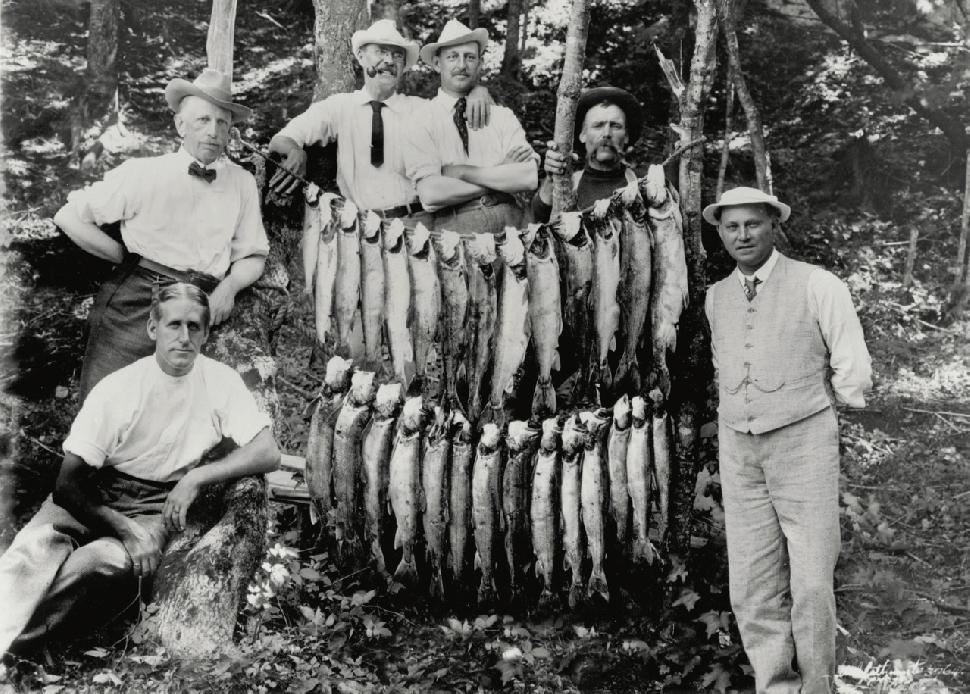
The conservation ethic was slower to arrive in our sportfisheries. Fish, unlike birds, are largely invisible to us, and it was difficult for lawmakers to determine reasonable limits. Like most Canadians, I grew up in a culture that revered the “dead fish” photograph. When I became a fishing guide, in my early twenties, the coolest thing you could do at the end of the day was pull up to the lodge with your guests and pose for a photo with a chain stringer of 18 hog-fat female walleye.
The fetish for whoppers was even more problematic in the Far North, where huge, slow-growing lake trout drew anglers from across North America. When I worked in the N.W.T. in the 1970s, it was unthinkable to release a giant trout. Bragging rights were at stake, after all, and every night, guides would bring home tubs full of trout, each fish almost as old as they were. At the end of the week, the tourists would fly home with coolers full of frozen fillets, most of which would no doubt freezer-burn after a few months and get thrown away.
By the 1990s, some of Canada’s most prized fish species were in serious trouble. Atlantic salmon, lake trout, muskellunge, sturgeon and Pacific salmon were all suffering from decades of overharvest. But the conservation ethic soon gained strength. Outdoor magazines, celebrity anglers, TV fishing shows and fish conservationists began educating outfitters, retailers, and the public about the importance of low-harvest angling. Catch-and-release fishing became normalized, and countless wilderness lodges across the country now enforce a no-kill policy.
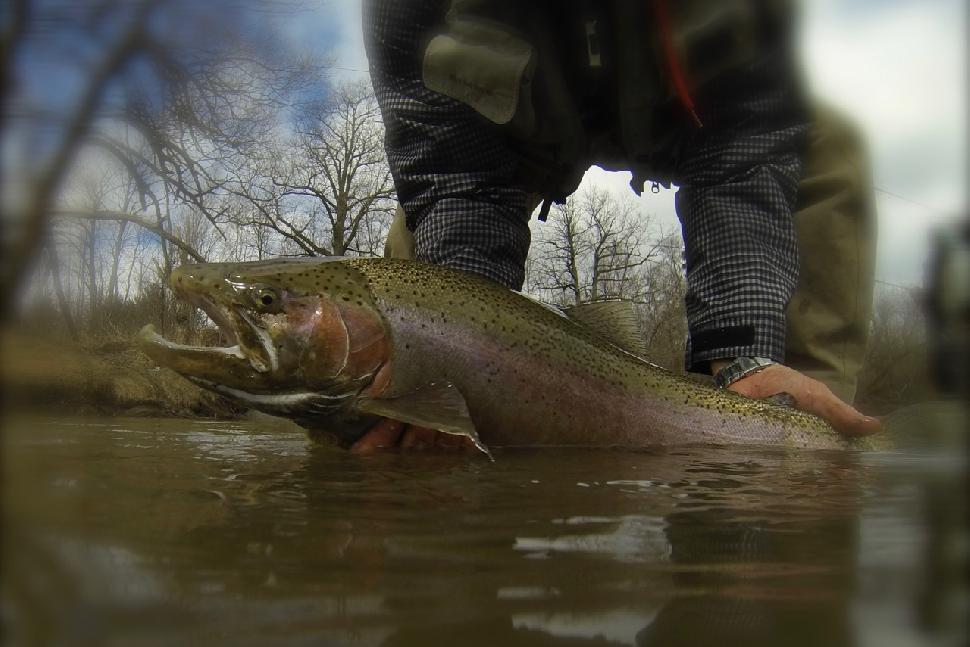
On the West coast, angler-based volunteer groups are now hard at work trying to reverse the decline of chinook salmon, steelhead and B.C.’s own living dinosaur—the Fraser River’s white sturgeon. Down East, a disparate group of fish enthusiasts called the Atlantic Salmon Federation continue working to save the fabled “leaper,’ bringing the species back from the brink in the nick of the time. And in some regions of the country, thanks to the conservation ethic, the fishing is now as good or better than it has ever been.
What would Seton, Roosevelt, Aldo Leopold and the other early pioneers of conservation think of today’s world? One can’t help but think they’d be mute with fury and sorrow at the destruction of the rainforests, the pillage of the oceans, and the looming extinction of the Siberian tiger, black rhino and many more of the world’s greatest animals. But they were men of faith and action, and they’d be encouraged by the progress made in some areas. They’d roll up their sleeves and get busy on the rest.
Later in life, Seton was largely responsible for creating the Boy Scouts of America. It was his idea that many of the badges, rituals and symbols of the Scouts should be modeled on the wolf pack. He said he learned many lessons about the complex web of nature while studying wolves and other animals. But perhaps the most important lesson is articulated in the last law of the Boy Scout code: “Be conservation-minded.” Here’s to 150 more years of carrying on with that ethic, ensuring that future generations of Canadians can also enjoy fishing and hunting—and the adventure of an outdoor life.
Happy birthday, Canada.

